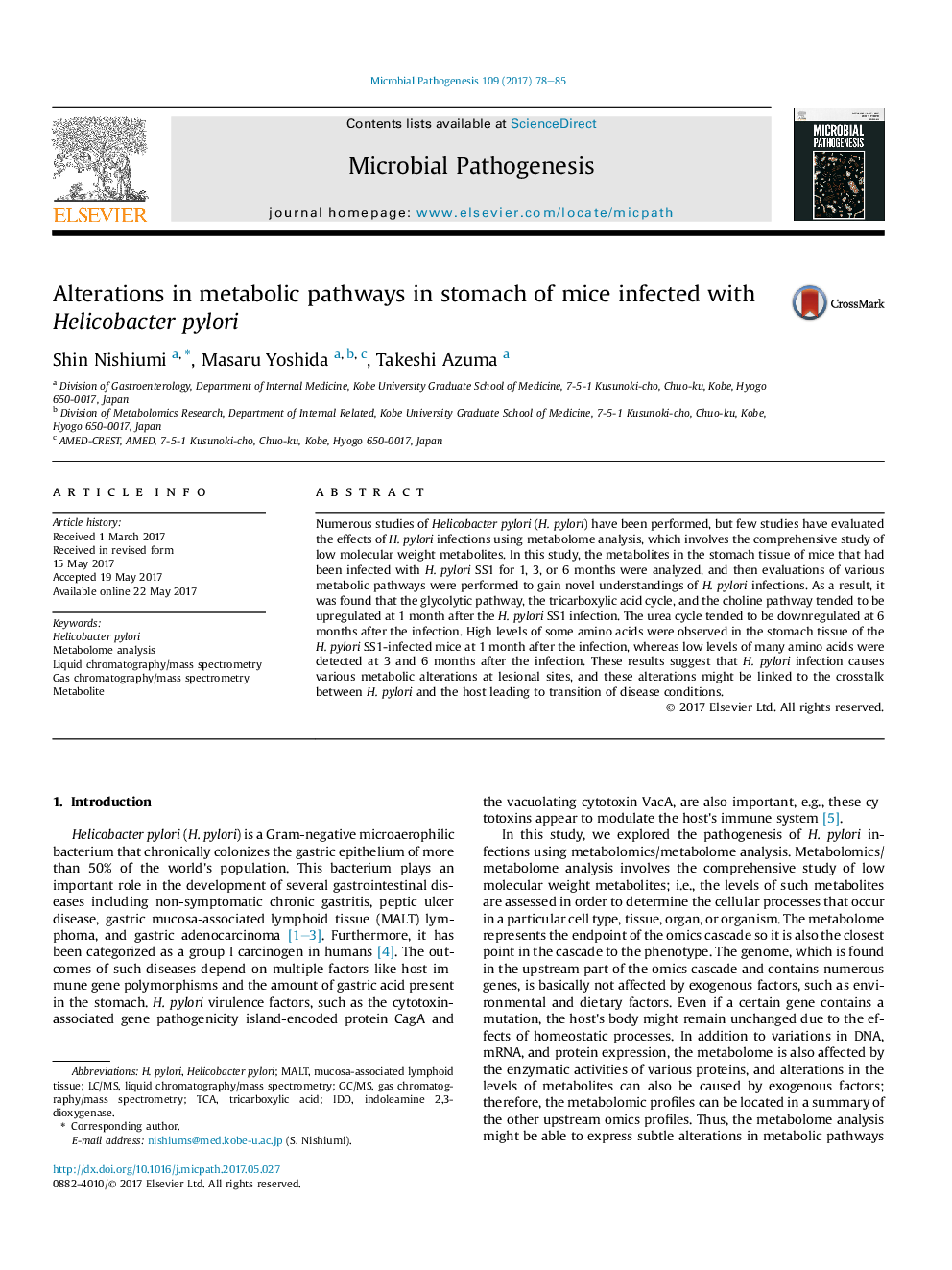| Article ID | Journal | Published Year | Pages | File Type |
|---|---|---|---|---|
| 5673866 | Microbial Pathogenesis | 2017 | 8 Pages |
â¢We performed metabolome analysis of the stomach of mice that had been infected with H. pylori SS1 for 1, 3, or 6 months.â¢We evaluated the H. pylori infection-induced modulation of various metabolic pathways via metabolite profiling.â¢H. pylori infection caused various metabolite alterations at lesional sites.
Numerous studies of Helicobacter pylori (H. pylori) have been performed, but few studies have evaluated the effects of H. pylori infections using metabolome analysis, which involves the comprehensive study of low molecular weight metabolites. In this study, the metabolites in the stomach tissue of mice that had been infected with H. pylori SS1 for 1, 3, or 6 months were analyzed, and then evaluations of various metabolic pathways were performed to gain novel understandings of H. pylori infections. As a result, it was found that the glycolytic pathway, the tricarboxylic acid cycle, and the choline pathway tended to be upregulated at 1 month after the H. pylori SS1 infection. The urea cycle tended to be downregulated at 6 months after the infection. High levels of some amino acids were observed in the stomach tissue of the H. pylori SS1-infected mice at 1 month after the infection, whereas low levels of many amino acids were detected at 3 and 6 months after the infection. These results suggest that H. pylori infection causes various metabolic alterations at lesional sites, and these alterations might be linked to the crosstalk between H. pylori and the host leading to transition of disease conditions.
